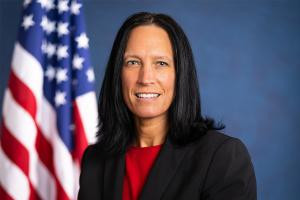Ohio State Safety Director Explores Enhanced Community Partnerships
The Chronicle of Higher Education recently featured The Ohio State University’s public safety director Monica Moll in an article that delves into challenges faced by college police forces, and their unique responses. Moll’s decades of experience provide stability while still encouraging innovation amidst the evolving landscape of campus safety.
When it comes to The Ohio State University Police Department’s working partnership with other local agencies, Moll says the division holds monthly meetings with a host of local law enforcement agencies to coordinate their efforts, including the Columbus Division of Police (CPD).
In late 2020 Ohio State announced a task force to review safety issues on campus and in neighborhoods near the university. The group was made up of representatives from the Office of Student Life, Department of Public Safety, students, staff, public health professionals and many more.
Safety enhancements the university has made since implementing its safety task force have led to a steady decrease in off-campus crime. These efforts included installing more than 60 license plate readers on and off campus, adding 20 LED light fixtures off campus and working with the city of Columbus to add surveillance cameras in the University District and at all campus parking garages. The department has also hired more police and non-sworn security as well as expanded a joint patrol program in partnership with CPD. In addition, the university encourages students to take charge of their own safety by offering an online safety course called Stay Safe Buckeyes. This one-hour, video-based class module covers topics such as crime prevention, how to report a crime, self-defense and more.
In relation to building community support and trust, Moll mentioned Ohio State’s Office of Student Life expanding its long-running community roundtable, which consists of bringing in people from different positions across Columbus, including business owners and homeowners, for a monthly discussion with university students and staff.
“The idea is to get people talking about housing-code enforcement, street lighting, door locks and other safety issues on the edge of campus, where a lot of our people live,” Moll told the outlet.
The value of building relationships is priceless as those connections help keep the university community and beyond safe.
“We’re looking to get all kinds of residents to buy into safety,” said Dave Isaacs, a spokesman for the Office of Student Life. “If we do that, someone who sees that a light is out will be more likely to report it. We want to create an atmosphere where people are looking out for each other.”

